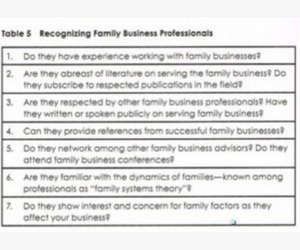Sex and Gender Differences In Stroke
WOMEN ARE DISPROPORTIONATELY AFFECTED BY STROKE
Stroke is the third leading cause of death for women. For men, it’s the fifth leading cause. Women have a higher lifetime risk of stroke and they are more likely to die from one. In addition, they are less likely to be aware of the three-hour window for administering the clot-dissolving drug tPA. Women are often less fully aware of their susceptibility to a stroke. Most are surprised to learn that they are twice as likely to die from a stroke as from breast cancer.
WOMEN HAVE THEIR OWN GENDER-SPECIFIC RISK FACTORS
Although many of the risk factors are the same for men and women, there are a number of female-specific risks. Risk factors for both sexes include: high blood pressure, coronary artery disease, smoking, obesity, lack of exercise, and metabolic syndrome. There are some risk factors that occur in both men and women but have a greater impact on women. These include: migraine with aura, atrial fibrillation, and diabetes. Female-only risk factors include: pregnancy, pre-eclampsia, gestational diabetes, migraine with aura during pregnancy, oral contraceptives, menopause, and hormone replacement therapy. One other risk factor: because women live longer, there’s more time to accumulate risk factors.
PREGNANCY IS A SERIOUS RISK FACTOR
A woman’s body has to make adjustments to prevent her from bleeding out during delivery. This means pregnancy makes women more susceptible to blood clots. This is especially true at the time of delivery and the six weeks postpartum. While blood clots may affect the legs or lungs, they can also end up in the brain, causing a stroke. Another issue with pregnancy is if a woman has pre-eclampsia, her high blood pressure can put her at risk for stroke. A woman who had pre-eclampsia during pregnancy has a fourfold greater risk of developing hypertension over the next 30 years, and a twofold increase in her risk of stroke.
RECOMMEND LIFESTYLE CHANGES FOR PATIENTS WHO’VE HAD PRE-ECLAMPSIA
If a woman has had pre-eclampsia during pregnancy, this is the time to intervene and encourage lifestyle changes that can lower her risk for stroke later on. There’s a lot of evidence that physical activity and having a healthy diet can prevent the obesity and diabetes that lead to coronary artery disease and stroke.
LOW-DOSE ASPRIN MAY BE APPROPRIATE FOR A HEALTHY WOMAN AT AGE 65
We know that low-dose aspirin is appropriate for women who have risk factors. But should a healthy 65-year-old woman take aspirin to prevent a first stroke, just because of her age? A 10-year study in which health care professionals were randomized with half taking aspirin every other day and half receiving a placebo showed that this aspirin regimen did prevent some strokes. However, there’s a lot to be said for deferring the decision to the individual physician since he or she knows the patient’s situation best.
There are risk assessment tools used as guidelines such as the one available at http://cvdrisk.nhlbi.nih.gov. If using the tool shows a 20% chance of having a stroke in the next ten years, she would probably benefit from a low-dose aspirin regime. The existing risk factor tests are a good start, but they could be better. Currently, they don’t consider the female-specific risk factors such as pregnancy.
SOURCES FOR ADDITIONAL INFORMATION
The 2014 Guidelines for the Prevention of Stroke in Women from the American Heart Association/American Stroke Association summarize the data on stroke risks unique to women and the risks that are more common in women than men. Click Here to Read
Search Articles
Latest Articles
Ukraine’s Mental Health Crisis & AI Solutions
https://aablanco.substack.com/p/ukraines-mental-health-crisis-and?utm_source=post-email-title&publication_id=1780826&post_id=153290811 Publication –aablanco.substack.com
Tackling Trauma Through Artificial Intelligence
https://www.psychologytoday.com/us/blog/to-end-human-trafficking/202411/tackling-trauma-through-artificial-intelligence Publication –psychologytoday.com
The Diplomat Mitzi Perdue Nantucket Ukraine
https://www.n-magazine.com/the-diplomat-mitzi-perdue-nantucket-ukraine Publication –n-magazine.com
An Explosive Choice: Landmines and Ukraine
https://cepa.org/article/an-explosive-choice-landmines-and-ukraine/ Publication –cepa.org
Subscribe to Updates
About Author

Mitzi Perdue is the widow of the poultry magnate, Frank Perdue. She’s the author of How To Make Your Family Business Last and 52 Tips to Combat Human Trafficking. Contact her at www.MitziPerdue.com
All Articles
Choosing Your Family Business Advisors
Choosing Your Family Business AdvisorsKnow when you need to get help. People often ask me the secret of Frank Perdue’s success. He had to do hundreds of things right. He had to be able to see the big picture as well as be detail oriented. But there was something else:...
Substance Abuse and the Family Business
Substance Abuse and the Family Business When it comes to substance abuse, members of a family business are no more immune than the rest of the population. However, as family business advisor Loyd Rawls points out, the consequences can be more dire because serious...
Infertility: Advances In Treatment
Infertility: Advances In TreatmentAge and Infertility are Linked Infertility affects roughly 12% of women. By the time a woman is in her early 40s, her chance of infertility rises to 20%. It’s a particularly difficult problem for the older woman because the quality...
Career Advice for Young People: Shut Up and Listen!
Career Advice for Young People: Shut Up and Listen! Jack Tatem, a former Perdue Vice President, has some serious advice for young people. It’s simple and it can make a big difference in your career. It has to do with listening. The advice is, “Shut up and listen!” He...
Embedding The Family’s Values by Creating an Ethical Will
Embedding The Family’s Values by Creating an Ethical WillOriginal Article written by Mitzi can be found here. Much as I admired Frank Perdue for his success with his family poultry business, I admired him even more for his success as a family man. Since the happiness...
6-Step Solution to Almost Any Problem
6-Step Solution to Almost Any Problem 1. Describe the Problem. Preferably do this in writing. The act of putting the problem into words can clarify your thinking. 2. Write Down the Obstacles. Although I’m a fan of positive thinking, I’m also a fan of research...





